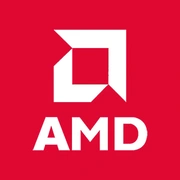AMD Radeon RX 7650 GRE

The AMD Radeon RX 7650 GRE emerges as a compelling choice for desktop enthusiasts seeking a balance between performance and efficiency. Clocked with a base frequency of 1,720 MHz and boosting up to an impressive 2,690 MHz, this GPU delivers robust processing capabilities suitable for both gaming and professional applications.
Equipped with 8GB of GDDR6 memory operating at 2,250 MHz, the RX 7650 GRE ensures smooth multitasking and efficient handling of high-resolution textures. The 2 MB L2 cache complements the 2,048 shading units, contributing to a theoretical performance of 22.481 TFLOPS. This combination allows for seamless rendering of complex scenes and supports ray tracing features, enhancing visual fidelity in supported titles.
Power consumption is a notable aspect, with a TDP of 165W. While this is relatively moderate for a high-performance GPU, users should ensure adequate cooling solutions are in place to maintain optimal temperatures during intensive tasks. The energy efficiency of the RX 7650 GRE makes it a suitable option for mid to high-end desktop builds without necessitating significant upgrades to power supplies.
In real-world scenarios, the Radeon RX 7650 GRE handles modern AAA games at 1440p resolution with high settings, maintaining smooth frame rates. Additionally, content creators will appreciate the GPU's capability to accelerate rendering and video editing workflows.
Overall, the AMD Radeon RX 7650 GRE offers a balanced mix of speed, memory capacity, and power efficiency, making it a versatile choice for gamers and professionals alike. Its competitive performance metrics and reliable architecture position it as a strong contender in the current GPU market.
Basic
Label Name
AMD
Platform
Desktop
Launch Date
February 2025
Model Name
Radeon RX 7650 GRE
Generation
Navi III
Base Clock
1720 MHz
Boost Clock
2690 MHz
Bus Interface
PCIe 4.0 x8
Transistors
13.3 billion
RT Cores
32
Compute Units
32
TMUs
?
Texture Mapping Units (TMUs) serve as components of the GPU, which are capable of rotating, scaling, and distorting binary images, and then placing them as textures onto any plane of a given 3D model. This process is called texture mapping.
128
Foundry
TSMC
Process Size
6 nm
Architecture
RDNA 3.0
Memory Specifications
Memory Size
8GB
Memory Type
GDDR6
Memory Bus
?
The memory bus width refers to the number of bits of data that the video memory can transfer within a single clock cycle. The larger the bus width, the greater the amount of data that can be transmitted instantaneously, making it one of the crucial parameters of video memory. The memory bandwidth is calculated as: Memory Bandwidth = Memory Frequency x Memory Bus Width / 8. Therefore, when the memory frequencies are similar, the memory bus width will determine the size of the memory bandwidth.
128bit
Memory Clock
2250 MHz
Bandwidth
?
Memory bandwidth refers to the data transfer rate between the graphics chip and the video memory. It is measured in bytes per second, and the formula to calculate it is: memory bandwidth = working frequency × memory bus width / 8 bits.
288.0GB/s
Theoretical Performance
Pixel Rate
?
Pixel fill rate refers to the number of pixels a graphics processing unit (GPU) can render per second, measured in MPixels/s (million pixels per second) or GPixels/s (billion pixels per second). It is the most commonly used metric to evaluate the pixel processing performance of a graphics card.
172.2 GPixel/s
Texture Rate
?
Texture fill rate refers to the number of texture map elements (texels) that a GPU can map to pixels in a single second.
344.3 GTexel/s
FP16 (half)
?
An important metric for measuring GPU performance is floating-point computing capability. Half-precision floating-point numbers (16-bit) are used for applications like machine learning, where lower precision is acceptable. Single-precision floating-point numbers (32-bit) are used for common multimedia and graphics processing tasks, while double-precision floating-point numbers (64-bit) are required for scientific computing that demands a wide numeric range and high accuracy.
44.07 TFLOPS
FP64 (double)
?
An important metric for measuring GPU performance is floating-point computing capability. Double-precision floating-point numbers (64-bit) are required for scientific computing that demands a wide numeric range and high accuracy, while single-precision floating-point numbers (32-bit) are used for common multimedia and graphics processing tasks. Half-precision floating-point numbers (16-bit) are used for applications like machine learning, where lower precision is acceptable.
688.6 GFLOPS
FP32 (float)
?
An important metric for measuring GPU performance is floating-point computing capability. Single-precision floating-point numbers (32-bit) are used for common multimedia and graphics processing tasks, while double-precision floating-point numbers (64-bit) are required for scientific computing that demands a wide numeric range and high accuracy. Half-precision floating-point numbers (16-bit) are used for applications like machine learning, where lower precision is acceptable.
22.481
TFLOPS
Miscellaneous
Shading Units
?
The most fundamental processing unit is the Streaming Processor (SP), where specific instructions and tasks are executed. GPUs perform parallel computing, which means multiple SPs work simultaneously to process tasks.
2048
L1 Cache
128 KB per Array
L2 Cache
2 MB
TDP
165W
Vulkan Version
?
Vulkan is a cross-platform graphics and compute API by Khronos Group, offering high performance and low CPU overhead. It lets developers control the GPU directly, reduces rendering overhead, and supports multi-threading and multi-core processors.
1.3
OpenCL Version
2.2
OpenGL
4.6
DirectX
12 Ultimate (12_2)
Power Connectors
1x 8-pin
Shader Model
6.8
ROPs
?
The Raster Operations Pipeline (ROPs) is primarily responsible for handling lighting and reflection calculations in games, as well as managing effects like anti-aliasing (AA), high resolution, smoke, and fire. The more demanding the anti-aliasing and lighting effects in a game, the higher the performance requirements for the ROPs; otherwise, it may result in a sharp drop in frame rate.
64
Suggested PSU
450 W
Benchmarks
FP32 (float)
Score
22.481
TFLOPS
Blender
Score
1389.23
Vulkan
Score
96039
OpenCL
Score
84493
Compared to Other GPU
FP32 (float)
/ TFLOPS
Blender
Vulkan
OpenCL
Share in social media
Or Link To Us
<a href="https://cputronic.com/gpu/amd-radeon-rx-7650-gre" target="_blank">AMD Radeon RX 7650 GRE</a>